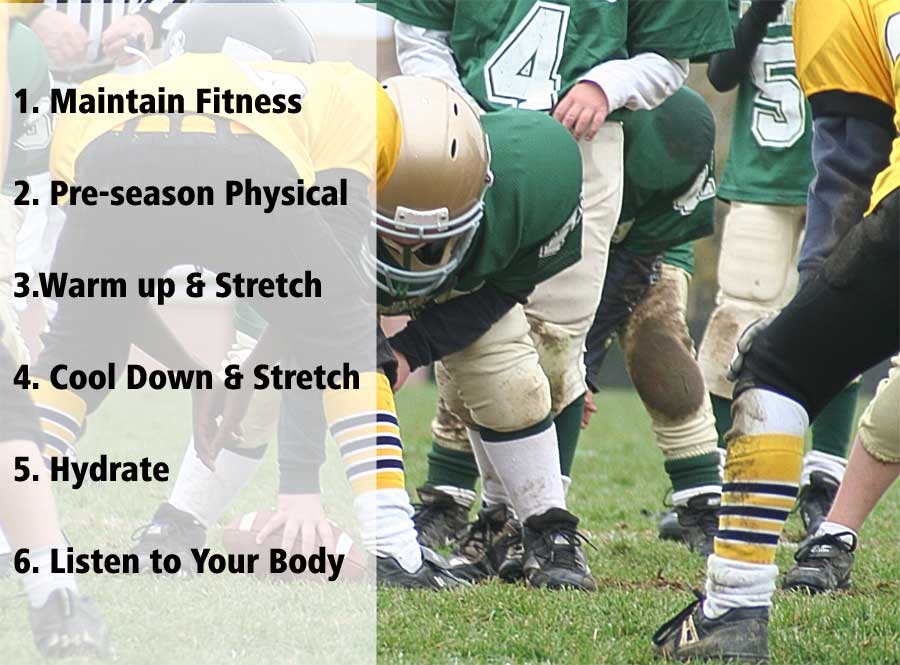Fitness Services: Sport Performance Training: Football

Football Injuries
Despite the protective equipment and stringent safety precautions and rules in organized leagues, football is still a sport with a high incidence of injury. Between professional, collegian, junior, and recreational players, there are millions of people actively participating in American football each year.
We all know that football is a physically demanding and high impact sport. Football centers around a high amount of expected and unexpected physical contact between players.
The ACL and MCL are the most often injured knee ligaments in football, but any of these ligaments can be stretched or torn when a force is applied to the knee that causes it to move past its normal range of motion or when the surrounding muscles violently contract. In football, sprains commonly occur from the knee being twisted with the adjoining foot planted, hyperextension of knee, landing on a flexed knee, suddenly stopping from a high-speed sprint, or being directly hit on the knee.
Prevent Football Injuries with Proper Player Preparation
- Maintain fitness. Be sure you are in good physical condition at the start of football season. During the off-season, stick to a balanced fitness program that incorporates aerobic exercise, strength training, and flexibility. If you are out of shape at the start of the season, gradually increase your activity level and slowly build back up to a higher fitness level.
- Pre-season physical. All players should have a pre-season physical to determine their readiness to play and uncover any condition that may limit participation.
- Warm up and stretch. Always take time to warm up and stretch, especially your hips, knees, thighs and calves. Research studies have shown that cold muscles are more prone to injury. Warm up with jumping jacks, running, or walking in place for 3 to 5 minutes. Then slowly and gently stretch, holding each stretch for 30 seconds.
- Cool down and stretch. Stretching at the end of practice is too often neglected because of busy schedules. Stretching can help reduce muscle soreness and keep muscles long and flexible. Be sure to stretch after each training practice to reduce your risk for injury.
- Hydrate. Even mild levels of dehydration can hurt athletic performance. If you have not had enough fluids, your body will not be able to effectively cool itself through sweat and evaporation. A general recommendation is to drink 24 ounces of non-caffeinated fluid 2 hours before exercise. Drinking an additional 8 ounces of water or sports drink right before exercise is also helpful. While you are exercising, break for an 8 oz. cup of water every 20 minutes.
- MOST IMPORTANT. Avoid the pressure that is now exerted on many young athletes to overtrain. Listen to your body and decrease training time and intensity if pain or discomfort develops. This will reduce the risk of injury and help avoid burn-out.
Get Fit, Mobile, Flexible, Strong and Healthy the Right Way
Luke Connell Personal Fitness Trainers are CSCS Certified. You are ensured that no matter your fitness level, age or life stage, you will work with a personal fitness trainer professional who has the formal education and background to perform a mobility assessment and then design a strength and conditioning training program specifically designed for you. When exercise is performed correctly, amazing results occur. Done incorrectly, you can suffer disastrous consequences, especially in current exercise trends like CrossFit, Insanity, indoor cycling, Zumba®, and yoga.
